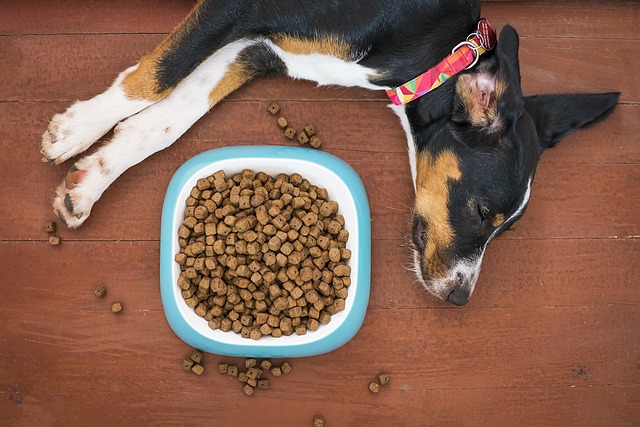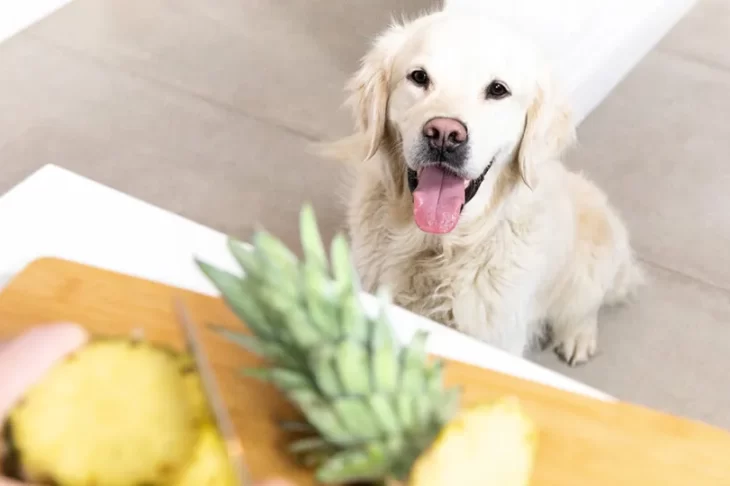
Can Dogs Eat Asparagus? Is It Safe to Share With My Dog?
Yes, most dogs can eat asparagus. Your dog can definitely enjoy some asparagus every now and then if cooked, cut into bite-sized pieces, and prepared without seasonings.
A tasty vegetable that is rich in vitamins and minerals is asparagus. Before giving asparagus to your dog, however, there are a few things to consider.
Table of Contents
Can Dogs Eat Asparagus?
Yes, but exercise caution. Dogs are permitted to consume the same portions of asparagus as humans do: the tips and the tender, cooked stalk. However, dogs may have trouble digesting raw asparagus, and whole asparagus stalks may be a choking hazard.
If you purchase raw asparagus, cut off the fibrous bottom of the stalk, then cook the asparagus until it is tender. Then it’s okay to give some to your dog.
A word of caution: When left to grow, asparagus plants can flower and grow small red “berries”. It’s best to only eat asparagus when it’s in the tender shoot stage because the seedpods are toxic to both humans and dogs.
The berries can give you stomach pain, diarrhea, and vomiting if you eat them. This is typically only a problem if you are growing asparagus in your backyard garden, in which case a strong fence should keep your dogs out.
How Much Asparagus Can My Dog Eat?
Veterinarians frequently advise dog owners to adhere to the 10% rule. 10% of the calories in your dog’s diet can come from treats, including raw vegetables.
Asparagus contains 28 calories per cup, three grams of dietary fiber, and about 93% water.
Start off by giving your dog a small amount of asparagus, as you would with any new food. Give your dog a few pieces, then observe how her stomach reacts. Keep an eye (and nose) out for diarrhea and gas.
Can Eating Asparagus Be Dangerous for My Dog?
Dogs can eat asparagus without harm, but it is advised to remove the tough ends and cook the stalks until they are tender before giving them to your dog.
There’s also a plant called the “asparagus fern” that is toxic to dogs. Despite being a close relative of the food asparagus, neither humans nor dogs can eat this plant. Usually, when you hear that asparagus leaves are toxic to dogs, vets and other experts are referring to the asparagus fern and other related plants, not the edible variety.
Once more, be on the lookout for the red seedpods that form after the plant is allowed to flower if you’re growing asparagus. These can make you throw up and have diarrhea because they are toxic.

Health Benefits of Asparagus for Dogs
Asparagus is low in calories, fats, and sugar as well; therefore, it is a suitable treat for your dog, provided that dog considers green vegetables to be “treats.”
This low-calorie veggie provides many nutrients such as:
- B-complex vitamins
- Vitamins A, C, and K
- Micronutrients like potassium, zinc, and iron
- Powerful antioxidants to combat cell-damaging free radicals
- Loads of dietary fiber
Tips to Safely Feeding Your Dog Asparagus
Asparagus stalks are particularly tough, to start. Because it would be very challenging to chew, we humans don’t typically eat raw asparagus. This challenge will also apply to dogs. You should cut up the asparagus into small pieces before giving it to your dog (though we don’t advise it) to reduce the chance of them trying to swallow it whole and possibly choking.
Raw asparagus may not be easy to digest for your dog. Try lightly cooking asparagus the next time you feed it to your dog in case they have nausea, gas, or diarrhea after eating it raw. Additionally, lightly cooking the asparagus makes it easier to chew. Never use butter or cooking oil to prepare asparagus for your dog because they can make them ill. You should just steam or boil the vegetable.
Serving Ideas
Before serving asparagus to your dog, it must be thoroughly prepared and soft. To reduce the risk of choking, cut the asparagus into bite-sized pieces.
- Make soup for your dog by simmering asparagus in bone broth along with other vegetables like carrots and sweet potatoes.
- For a tasty canine risotto, cook rice in chicken broth for 20 minutes before adding chopped asparagus.
- Give your dog a spear of plain, steamed asparagus from your dinner as a nutritious, quick treat.
If you do give your dog asparagus, make sure to cook it first and cut it into bite-sized pieces. Asparagus can be fibrous, so make sure the pieces are very soft and simple to chew before eating.
FAQs
Are There Any Risks in Dogs Eating Asparagus?
Asparagus contains both soluble and insoluble fiber, which can be very hard on your dog’s digestive system. Gassiness, upset stomach, and vomiting can result from consuming too much dietary fiber.
Tip: not all parts of the asparagus plant are safe for your dog. It’s important to be aware that the berries from the asparagus fern are toxic to our dogs (and us humans! ), though you won’t really need to worry about this unless you have an asparagus plant nearby.) You ought to be fine as long as you stick to the delicate asparagus spears.
Can My Dog Eat Raw Asparagus?
When not properly prepared, raw asparagus stalks are tough and a choking hazard, especially for small dogs. Avoid the unnecessary stress and try cooking and cutting the asparagus into bite-sized pieces.
Is Canned Asparagus Safe for My Dog?
Dogs frequently have too much salt in canned asparagus. Fresh asparagus that has been cooked but not seasoned makes a safer snack. Your dog may become salt poisoned from eating too much salt, which necessitates immediate veterinary care.
Can I Offer My Dog An Asparagus Spear from My Plate?
It’s probably not a good idea to give your dog an asparagus spear from your plate if you’re someone who likes to season their vegetables liberally. If you intend to feed your dog some asparagus, be sure to make a few plain spears for them because seasonings can be harmful to dogs.
Can Diabetic Or Overweight Dogs Eat Asparagus?
There are no sugars in asparagus, and it is low in calories and fats. By substituting this vegetable for high-fat commercial treats, overweight and diabetic dogs can undoubtedly benefit. As always, before giving them to your dog, be sure to consult your veterinarian.
Every fruit or vegetable that is consumed more frequently than as a treat is unhealthy. The 90/10 rule should be followed when feeding your dog: 90% of their daily caloric intake should come from balanced dog food, and 10% should come from treats. A dog’s weight will increase and they’ll become obese if they receive too many treats.
Read about




